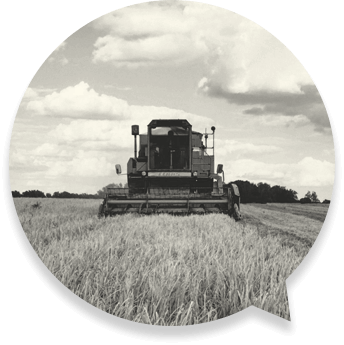THE NEXT FIVE
THE NEXT FIVE - EPISODE 7
Shaping sustainable supply chains
Experimental packaging to digital twin technology: listen to why sustainability must be centre stage for supply chains






































The Next Five is the FT’s partner-supported podcast, exploring the future of industries through expert insights and thought-provoking discussions with host, Tom Parker. Each episode brings together leading voices to analyse the trends, innovations, challenges and opportunities shaping the next five years in business, geo politics, technology, health and lifestyle.
















Featured in this episode:
Tom Parker
Executive Producer & Presenter
Arco Berkenbosch
VP Innovation and Development at Smurfit Kappa
Abe Eshkenazi
Chief Executive Officer, Association for Supply Chain Management
Stanton Thomas
Senior Vice President of Sustainability Solutions at o9 solutions
Global supply chains are near breaking point. The pandemic showed their weaknesses and geopolitical tensions, like Ukraine, have exacerbated the issue.
And yet the biggest issue facing our world is climate change - and supply chains have a big part to play in the solution. But with complex global supply chains comes challenges - mainly maintaining net zero agendas across multiple partners. Arco Berkenbosch, VP Innovation and Development at Smurfit Kappa tells us how collaboration and experimentation are key to success and that sustainable packaging can make a big difference to our climate goals. Abe Eshkenazi, Chief Executive Officer, Association for Supply Chain Management also extols the virtues of technology to offer visibility across partners and calls for consumer demands to change to help make supply more sustainable. And finally, Stanton Thomas, Senior Vice President of Sustainability Solutions at o9 solutions, joins to show how AI and machine learning can help organisations track and test their supply chain sustainability like never before.
Our Sources for the show: FT Resources, Mckinsey, Gartner, Morgan Stanley, Meteorspace, CNBC, Harvard Business Review, Climate Partner. This content is paid for by Smurfit Kappa and is produced in partnership with the Financial Times' Commercial Department.
READ TRANSCRIPT
- Tech
- Climate
Transcript
Shaping sustainable supply chains
MUSIC UP
BIDEN 00:02 "The COVID-19 pandemic exposed the fragility of just-in-time supply chains.’
https://www.c-span.org/video/?c5016112/the-fragility-time-supply-chains
SUNAK: 25:26 ‘The aftermath of global pandemic that has affected supply chains across the world….
https://www.c-span.org/video/?523943-1/question-time
Tom Parker 00:17 Global supply chains are near breaking point. The pandemic showed their weaknesses and geopolitical tensions, like Ukraine, have exacerbated the issue. Solving supply chain woes is a global problem not a local one.
And yet the biggest problem facing our world is climate change - and supply chains have a big part to play in the solution.
Abe 17:18
Supply chain sustainability is a significant challenge.
ARCO 33:58 I think at least the sense of urgency is indescribable
Tom Parker 00:36
I'm Tom Parker, and welcome to the next five podcast brought to you by the FT partner studio. In this series, we ask industry experts about how their world will change in the next five years, and the impact it will have on our day to day. In this episode, we're talking about sustainable supply chains and I'll be speaking to experts about the acute pressures on today’s supply chain and how we can reach a net zero supply future.
MUSIC FADE
TOM 00:18 Before we tackle the sustainability issue it’s important to understand the web of problems facing supply chains. The last few years have been tough. The pandemic crippled global supply chains and the Ukraine conflict has brought them once again to their knees. 00:46 If anything, they both highlighted the complex, global and interconnected nature of the contemporary supply chain.
Abe: The challenges that we're facing today are unprecedented. We've dealt with challenges in the past, when we've had environmental issues, we hit geopolitical issues, we've had wars, we've had a number of different disruptions.
Tom Parker 01:42 This is Abe Eshkenazi, Chief Executive Officer of the Association for Supply Chain Management
The challenge that we're facing right now is that they're all occurring at the same time. So it's not a function of addressing one disruption that we can address whether through a supply issue or demand shift issue. We're dealing with geopolitical issues, we're dealing with tariffs, historic tariff issues, we're dealing with environmental challenges, we're still addressing the outcomes or the shortages that we addressed in the beginning part of the pandemic.
01:34
Prior to the pandemic, we had an extremely efficient supply chain, just in time was the hallmark for almost every supply chain. high variability, reasonable costs, rapid delivery Unfortunately, it did mask a lot of the challenges inherent in the supply chains.
2:47 in terms of where organisations are focusing their efforts today.resiliency and agility right now are at the top of the priorities for organisationsAnd that's the ability to respond to changes whether it's a pandemic, whether it's a geopolitical issue, whether it's a climate change issue.
Tom Parker 01:55 Given all of the pressures on supply chains you’ve mentioned - where does Sustainability fit in?
Abe
Supply chain sustainability is a significant challenge. But unfortunately, the focus has been reduced because of the focus on acute issues, whether it's PPE or semiconductors or you know, fuel.
Abe
When we see a disruption, for example, in Ukraine, you know, getting food out, it's going to have an impact on food availability in the Middle East, which will have an impact on fuel availability in the rest of the world. And so you can connect the dots on sustainability on the supply chain by almost everything that occurs within the supply chain because it's a network. And so therefore we can't say, well, the chip issue is isolated from the food issue. No, it's not. They're connected.
Abe
Unfortunately, sustainability has taken a backseat. And this has been a challenge for us for quite a while is that while we're dealing with the acute issues, we may be taking our eye off the ball on the systemic issues, specifically on sustainability.
TOM :14:00 It’s true - we can’t take our eye off the ball. Implementation of sustainability agendas within an organisation, while still a challenge, is easier to control, navigate, adapt and account for. It gets more attention, more eyeballs. But a company’s supply chain creates far greater social and environmental costs than its own operations. More than 80 percent of greenhouse-gas emissions and more than 90 percent of the impact on air, land, water, biodiversity, and geological resources comes from outside the company. So we need to look further and herein lies the problem.
ARCO If you're looking at the greenhouse gas protocol in in 2001,
TOM 01:03 This is Arco Berkenbosch, VP Innovation and Development at Smurfit Kappa, one of the leading providers of paper-based packaging in the world, with operations in over 30 countries.
Basically companies are always talking when they talk about Net Zero, they talk about three scopes, the first scope is what they do themselves. So what comes out of the chimney? The second scope is the sustainability impact of what you get from the gate. So how the local or the company is supplying the gate. And the third scope. The third scope is what the supply chain does. So your customers and your suppliers on your net zero ambitions. And if you look at the worldwide data for more than 90%, so for more than 90%, the supply chain has the biggest impact. So not what they do themselves, not what they get from the gate, but the supply chain. Though combining that with the enormous complexity. That means that building a net zero supply chain is a huge complexity challenge. Saying you have so many suppliers, you have so many customers, you have so many dynamics. Just imagine getting all your suppliers aligned to follow the same protocols to go to the same measurement methods to think about the same way to discuss waste. Yeah, that that is a huge challenge
So the complexity is very high.
Arco soundbite
If the majority of your emissions are done by your supplier, you have to decarbonize the electricity, or you have to put in windmills or solar panels. The biggest challenge is how am I going to meet a menace by suppliers in my supply chain, to also become carbon emission neutral. So I think that is realised and the complexity of that is realised and that's where I see more and more discussions around it, how to step up from simple target setting, like say, I want all my suppliers to be net zero and 2052? And how are we going to make this view? So I think the biggest supply chain challenge we have now on this planet, especially in Europe, is getting away from target setting and start implementing.
Tom Parker 14:45 Abe what are your thoughts on this?
Abe is one of the areas that I think have been under-represented for a number of years. And that is specifically the impact of supply chain on sustainability or the sustainability of supply chains. Through a number of studies that have been done, there's estimates of up to 60% of scope, three emissions are part of the supply chains. And yet, when we take a look at the companies that are the major manufacturers, as well as the smaller manufacturers in terms of who's paying attention to those scope, three emissions, have they set the targets? are they reporting out on the impact of scope three, less than 50% of established targets and less than 45%? Report?
And yet, when we take a look at the supply chain, and the number of players that are in the supply chain, beyond tier one to tier two, and tier three, where most of the disruption occurred, and most of the impact on sustainability occurs, we have very, we have a significant lack of visibility and transparency into those players in the marketplace. So the sustainability issue has risen to top issue for almost every organisation, but yet, we still lack consistency in terms of what sustainability means to any particular industry, whether we're talking about electronics, or we're talking about pharma, very different measurements in terms of sustainability. Further, if we can't define what sustainability is, how are we going to hold organisations accountable?
Tom Parker 15:39 The EU is working on plans for a corporate sustainability due diligence directive. The proposal that looks set to be finalised in 2023 would require EU businesses with more than 500 employees and a global turnover of €150mn euros to create a strategy to manage environmental standards across their supply chains, essentially ensuring that their business model is compatible with the Paris Agreement.But with the complexity of supply chains, proper due diligence requires better digital tools to mine and manage that data.Fundamentally, organisations need to understand the sustainability impact of their supply chain decision making at a clarity never required before.
Stanon soundbite
08:50 I think the big challenge that we see right now is what's quote, unquote, scope three, emissions reporting.
Tom Parker 16:42 This is Stanton Thomas, Senior Vice President of Sustainability Solutions at o9 solutions, a leading enterprise AI software platform.
STANTON 08:23 sustainability requires traceability, the concept of understanding exactly what's happening in your supply chain, because the consumers want to know, investors want to know, that requires you probe your supply chain to a much greater depth than your enterprise systems currently will allow you to do. Right? So how do you do that? Well, it's a, it's a tricky problem, but it's about probing beyond your tier one to look at the tier two, tier three and that type of thing. Some of that data has been studied extensively by third party organisations. So you kind of can build out a notional picture of what your supply chain looks like.
Stanton soundbite 06:18
We're talking about essentially developing a logical picture of your physical supply chain and that's what a digital twin enables you to do.
Tom Parker 17:30 A digital twin is a digital replica of a physical supply chain. Essentially it recreates an organisation's real supply chain in a virtual world. This allows companies to model scenarios, stress test options, work out policy implications and fundamentally understand how decisions and disruptions will impact their network. Digital twin comes from essentially the product engineering world, you develop a digital design of your product, you embody that, that, that picture with various attributes, dimensions, capabilities, performance capabilities. The digital twin is a modelling framework that allows you to do that. And that allows you to, to begin to understand what your supply chain really looks like, at a product level, as well as kind of overall.
But sustainability requires traceability, the concept of understanding exactly what's happening in your supply chain, because the consumers want to know, investors want to know, that requires you probe your supply chain to a much greater depth than your enterprise systems currently will allow you to do. Right? So how do you do that? Well, it's a, it's a tricky problem, but it's about probing beyond your tier one to look at the tier two, tier three and that type of thing. Some of that data has been studied extensively by third party organisations. So you kind of can build out a notional picture of what your supply chain looks like.
10:08 If you're in the coffee business, that supply chain has been studied. And so you can model that supply chain. But in other cases, for instance, durable goods, high tech equipment, these supply chains are incredibly deep, right in turn, and so developing, they can go 456 levels deep, for instance, batteries, the cobalt that's required for battery technology, some of that goes very, very deep in some of the regions were the raw materials extracted and processes. Those regions tend to be very opaque in terms of information sharing.
AI and machine learning can be applied very effectively. And to essentially minimise the amount of human interaction with the data flows.
Machine learning can actually be incorporated to make a judgement And then, because AI can be driven with machine learning capabilities, you can actually improve the computer's ability to make those judgments over time. And this is really, really key in terms of the kinds of data volumes that we're talking about acquiring from our suppliers.
27:19 Without this type of AI driven capabilities. It will take companies, you know, far greater resources and far greater time if it has to be all done manually in the process. And this is one of the biggest pain points that we're seeing in the marketplace. It is being managed manually today. And it's just untenable.
Tom Parker 17:58 Arco your thoughts?
Arco Transparency is a key thing for supply chains.
Arco 21:42
And how can data help to do that? Well, first of all, we're not short of opportunities. There's so many opportunities to make the sustainment of the supply chain more sustainable. You can change the fuel, the trickler, the wage etc. Data can help you to choose the right priorities. Data can help you to at the beginning, think what can I do today? What can I do tomorrow? And what do I need to do in a couple of years? So that data plays a big role. Secondly, with data, you get insights much faster. So nowadays, I mean, everybody knows, Tesla that's driving, developing the self driving car, or the same thing you can do with data with artificial intelligence, you can much faster develop all kinds of scenarios by machine learning. Secondly, was data you can simulate, you can digitally experiment, you can think, Okay, what will be the sustainability impact? If I drive 10 small trucks, instead of five big trucks? What will be the sustainability impact? If I load metrics off the drive much more often? What will be the sustainability impact if I go electric with other slower doing these experiments physically, almost impossible. With data and simulations, I can do the 31st. And last but not least, it's all about conflicting solutions. Even in one company. I mean, I think the most trivial example is that the sales guy wants all the products in the warehouse, so you can sell it directly to the customer. The financial guy wants an empty warehouse since that food warehouse is working capital. Well, with data and simulations, you can say where's the current balance, where's to create balance by big trucks driving once per week, but then I have a warehouse with a sustainability impact or everyday small trick. So data can help you given all the complexity to look at the optimal. So in this way, with scenarios with x digital experiments with insights, we can make it better, much more flexible and much more reliable. Develop the roadmap to net zero. What can we do today? What should we do tomorrow? And how should we develop the plans for the long term future?
Tom Parker 18:08 Abe, how important is transparency?
Abe soundbite
transparency and visibility has risen to the top in almost every organisation, including with advanced automation, machine learning, as well as, you know, AI, there's a huge push right now for technology to enable the transparency and the visibility within their supply chains, hopefully, to get better, you know, not only data, but early warnings about disruptions within the supply chain that would have downstream effects.
Abe soundbite
Right now the trust factor that is necessary within the data isn't at the appropriate level. And so therefore, we need to be able to trust the information that we have. And we need to be able to trust the reporting that we have. If we do not get a consistent definition of sustainability, it's going to be extremely hard to hold organisations accountable for what they indicate is critical to them.
Abe
Everybody within the supply chain needs to understand that impacting their supply chains to be much more sustainable is a long term sustainable success issue, not a short term issue. You don't do sustainability, you live sustainably. And I think that's part of the challenge is that oftentimes, it's seen as a checkbox. Oh, we, you know, we did our, you know, our due diligence and we reported it out. And that's the end of it, as opposed to saying it impacts our innovation that impacts our product and impacts the packaging and index, the logistics, the warehousing, the recovery, the returns, every aspect of supply chain can be improved through sustainability focus areas, and collectively, I think packaging is one of the areas that's really the unsung hero of sustainable supply chains, we could do so much better on the front end so that it reduces the challenge and the impact on the back end.
The global ecommerce packaging market was valued at 27 billion USD in 2020 and is expected to reach 62 billion USD by 2026.
And unfortunately there’s a lot of waste. In 2020, the total volume of packaging waste generated in the EU was estimated at 79.3 million tonnes, that’s 177.2 kg per inhabitant.
Arco - 16:49
“Sustainable packaging is an important element of the solution for two reasons first, and I think maybe the most trivial one that everybody knows, why do I take a product. In essence, I pick a product to bundle and protect it. In essence, if you take very general numbers, the packaging itself is only three or 4% of the sustainability impact of the supply chain. So every time I ship a bottle of shampoo, or an apple or a pack of rice to the shop, and it's damaged, the rice is gone, the shampoo spilled, I spend a lot of money, I waste a lot of sustainable value.
Arco - 17:54
So by making packaging fit for purpose, we're making packaging so flexible and agile, that it will always maximise the load of my warehouse, the load of my truck, the load of my ship, I reduce the environmental load of the supply chain a lot.
Arco - 26:59
If you look at the plans that the European Union now has for the new packaging, and packaging waste elective, they want to have legal limits on the amount of space, empty space in E commerce packaging. So that the law will tell you what the efficiency of your package is.
Arco - 18:38: the one and only constant in the supply chain. The one and only thing that doesn't change owners from the packing line to the retail shelf is the pack the truck is by somebody different. The pallet is by somebody different. The people handling it is personally very different. The warehouse it's stored in is somebody different. The back is the only thing that the producer buys the pack, he puts the tax product in it, and it goes and it is in his ownership in his control until the shelf. So theoretically, and maybe also practically, that means that that should have a lot of potential in driving. The efficiency of the supply chain says if you want to change the dimensions of the pack, you don't have to discuss a student with companies, you only have to discuss with one. If you want to make the tech stronger or weaker, or red or green or more painted or less printed. You don't have to talk to the different companies, you only have to talk to one. So that makes packaging. Farish potentially a very strong enabler of sustainability in the supply chain.
Tom Parker 19:07 So let’s look ahead to the next five years? What can we expect?
Arco - 44:23
Innovation is the way out. But I think what makes innovation in the coming five years even more exciting is that the time pressure is huge. I mean, if you look at my work packaging, every packaging can be recycled. But will the packaging be recycled and practised? And can we make leap changes that in a common five years we can make a supply chain carbon neutral with Can we do that in the coming five years? To do that, I'm convinced and that makes the issue even more exciting than it has ever been, that on top of innovation, experimentation becomes huge.
As we look in the future, the complexity will only increase. If we look back, we talk about all these changes and new sales channels and ecommerce. People are experimenting with drone delivery, big trucks to the boundary of the city in a small truck going inside. Of course, maybe there will be drone delivery in the future. But that doesn't mean the trick delivery will disappear. So people should always remember that every new innovation at this moment is not replacing something, but replacing a part of something. So it's adding complexity. But also a lot of opportunities.
33:58 I think at least the sense of urgency is indescribable. I mean, we are implementing energy reduction programmes faster than ever. We are starting to use digital insights and digital connection due to code faster than ever.
34:23 We are experimenting more than ever.
36:00 You see that also in consumer behaviour in choices people make I see it on my kids, I see it on their friends, it is not only about Christ it is not only about how they enjoy life it is also about what's the impact on the planet they live.
38:40 I think that's more and more accepted with consumers that it's simply not possible to say I want the same amount or the same price for the same convenience. But then in a more sustainable solution.
36:18So experimentation, more complexity, but also a bigger and bigger group of consumers that are happy to make compromises. To create more sustainable solutions.
Tom Parker 19:Abe - your thoughts?
Ultimately, it does come down to the consumer in terms of the decisions they make.
consumers still expect just in time the rapid double delivery reasonable cost, but yet consumers still drive supply chains and companies respond to consumers expectations,
And when the consumer decides that they care about sustainability, and they only participate with those organisations that hold themselves accountable, then you'll see a much more active response to sustainability.
Unfortunately, the focus has been much more on the economic than it has been on the environmental and the ethical, and especially in today's turbulent environment.
One of the areas that we are particularly concerned about is just in case, and that is what happens during the next disruption.
Who's going to be responsible for the next demand surge? This is where we think public private and associations need to come together and address this because it's a global issue, not a local issue. And one of the areas that we fell down on within the pandemic is that we address the pandemic as a local issue, as opposed to a global issue. And so almost every region across the globe addresses them differently. And when you're dealing with a global issue on a local basis, you get exactly what we got a very disjointed response.
27:35 We do not have consistency. And so let's extend that to the global supply chain.
28:04 If we address and if we accept that we live in a global supply chain community, that means that you need to get all players on the same page.
37:42 right now, the focus is on collaboration, coordination and communication.
29:03I think we're going to see a much greater focus on data, and much greater focus on talent, to be able to discern what the data is telling them. And then finally, transparency and visibility into your extended system not only into your vendors, but into your customers as well. And so transparency and visibility goes both ways, understanding that demand side so that you can address it with the supply side with your vendors and your vendors vendor. And so quite a bit of focus right now in supply chain optimization, and digital transformation to enable that data collection and transparency and visibility being at the Hallmark right now. If you know, effective sustainable supply chains.
Tom Parker 19:21 and finally Stanton
Stanton 06:18
I think it's going to be a combination of the relationships that you have with your suppliers, as well as the development of third party data sources that enable you to build a more coherent and accurate picture of your supply chain. So, technology is important, digital transformation is important, but also kind of the business culture and the willingness in partnership mentality to be able to share data fluidly within this environment.
Stanton 33:39
I personally believe that we don't really have any choice in terms of reducing our footprint, you know, relative to the products and services that we produce and or consume. We have, you know, the IPCC is telling us that we have a limited amount of time to make some drastic reductions. And so I think it's going to require a number of technology pillars in order to do so. And it's going to require our commitment. And I, you know, if we, if we don't get it, right, I think the alternative is, is pretty, pretty drastic, I mean, we're going to be impacting not only the supply side of the supply chain, but also the demand side, because a lot of the markets that we sell into are going to be disrupted by climate related issues. So we have to get this problem under control and digital technology is a big part of it.
35:23 and we're now beginning to kind of stress the limits of the ecological system that we operate in, we have no choice but to get this right. And I think if you have skills and talents and abilities to operate in any aspect of the solution, I think this is a good place to be working.
Music Up
Music down
Tom Parker 22:09
It’s true we’re stressing the limits. Sustainable supply demands our attention.
20:06
But it’s still a difficult road ahead given the current pressures on global supply even though the business and environmental case is clear.
Yes supply chains need to become more resilient to shocks, demand needs to be understood and current fires put out. But sustainability can’t be forgotten about, it needs to be at the centre of everything. If anything, it’s a part of the solution to global shocks and saves our planet in the process. If you have the skills, talents and abilities to be a part of the solution you have to do it. Companies like Smurfit Kappa are playing their role in the front end by constantly experimenting on sustainable packaging solutions, organisations like ACSM are calling for and supporting change and technologies like o9 exist to help us map our supply chains to be more sustainable. Luckily other major players are doing their bit too. Wal-Mart, the largest retailer in the US, launched project gigaton in 2017.Its aim is to remove 1 gigaton of greenhouse gas emissions from their supply chain by 2030. To give context, that’s the equivalent to taking 211 million passenger cars off the road for a year.
We also need consumer buy in. And yet we are still buying. Today, the ecommerce market is valued at 3.3 trillion dollars but estimated to grow to 5.5 trillion in 2026. We have a choice, quick and cheap will cost in other ways. So we need to think before we ship, package and purchase.
The pieces of the puzzle are there, we just need to put them together quicker. Our planet doesn’t have a digital twin. There’s no repackaging. We have no choice but to get it right.
Music UP END






